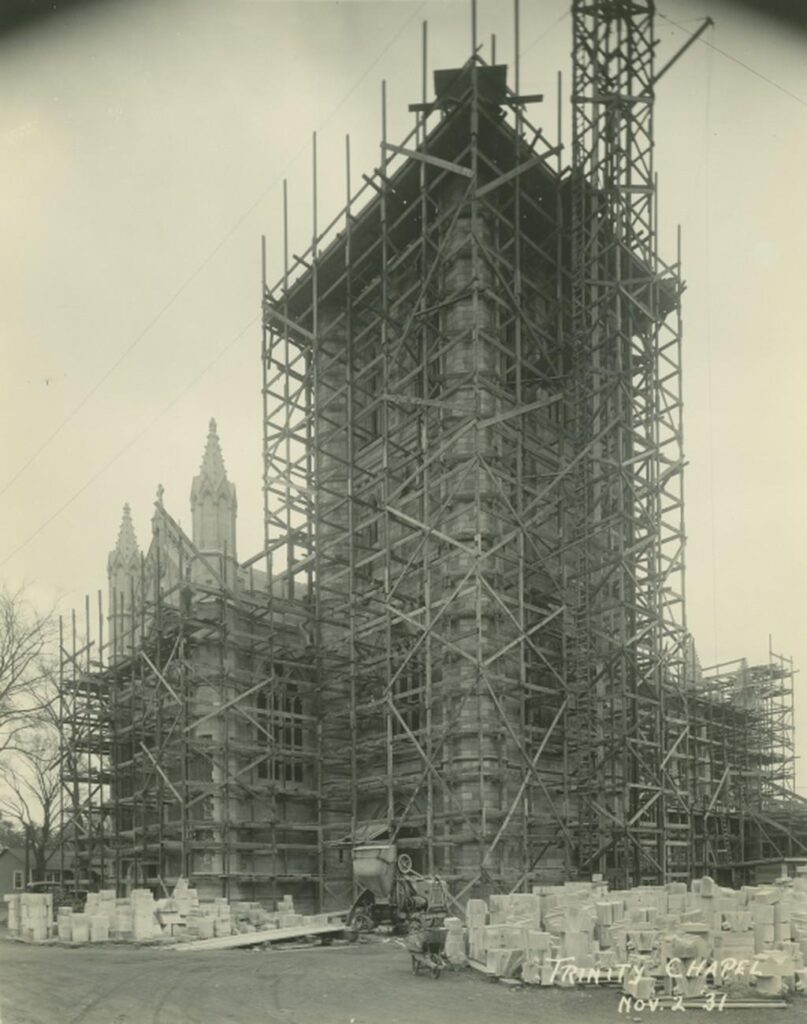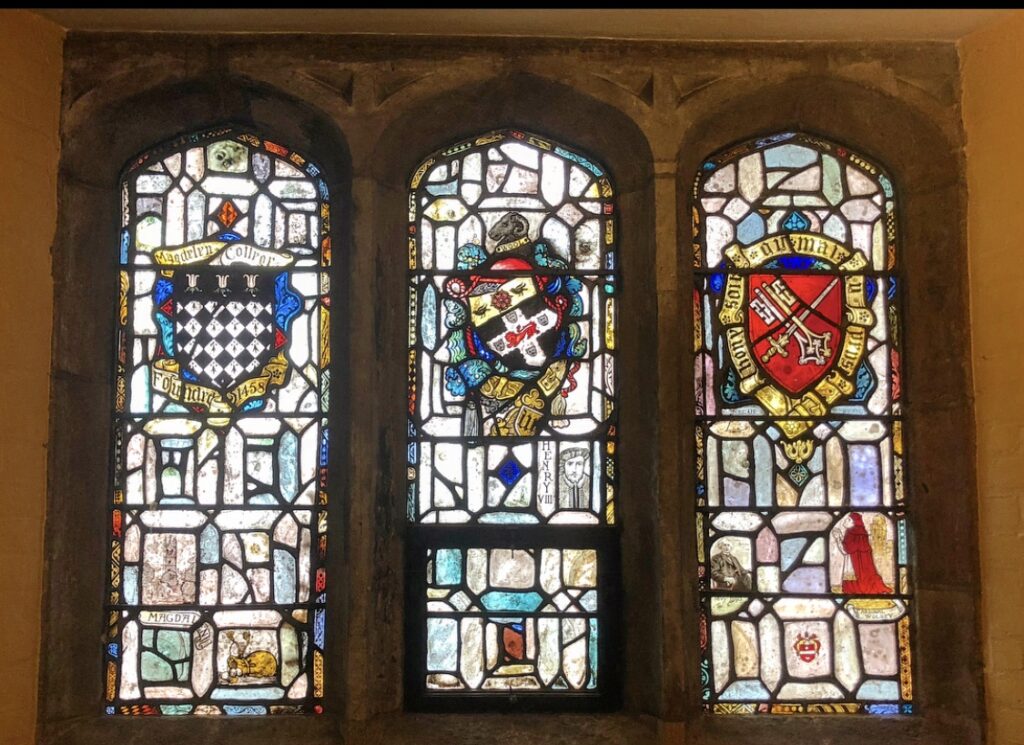Brendan W. Clark ’21
Editor-in-Chief
The Trinity College Chapel—a landmark of the “Trinity skyline”—is doubtless among the most photographed and cherished locations on campus. The Tripod took a moment this week to revisit the history of the historic building in anticipation of a forthcoming interview with Chapel Curator Christopher D.H. Row ’91.
The brainchild of Trinity College President Remsen Brinckerhoff Ogilby, with the philanthropic support of William G. Mather ’77, the Chapel would come to be designed in the English Gothic style but drew its interior and styling from rich architectural traditions. For Mather, the Chapel was a “building to love without reserve.”
Replacing the previous Chapel in Seabury Hall (in what is today Seabury 215), construction was commenced in December 1928. Despite the onset of the Great Depression, the Chapel was consecrated in the Episcopal tradition of the College’s founders on June 17, 1932, though the tower itself would not be completed until December 1932.
Envisioned by Ogilby and Mather as the spiritual heart of the campus (Chapel or religious attendance was required at the College in some form until the mid-1960s), the Chapel was constructed by noted architect Philip H. Frohman of Frohman, Robb & Little, who was instrumental in the construction of the National Cathedral in Washington, D.C. The College’s 1942 guide makes reference to a message across the Chapel entryway—“Nisi Dominus”—in reference to Psalm 127: “Except the Lord build the house, their labor is but lost that build it.” By all accounts, the phrase embodies the dedication of the Chapel’s workmen, who would so develop a fondness for the building that they would reconvene annually as the Chapel Builders Alumni Association. An interesting article on the Association can be had in the Winter 1967 Alumni Magazine.

The Chapel’s interior construction follows the English tradition, insofar as parishioners sit across from one another on either side of the aisle. Even today, the psalms are often read on Sunday Episcopal services “antiphonally, by whole verse,” taking advantage of this layout. The Chapel’s pew ends, depicting such variety as Captain Wadsworth and the hiding of the Charter in the oak to a tribute to Horace Wells, a Hartford dentist known for the discovery of anesthesia. A smaller ancillary “Chapel of Perfect Friendship” is to the right of the organ, with gates later installed by President George Keith Funston ’32. On either side of the main Chapel’s altar is the chancel, adorned with a bestiary carved by J. Gregory Wiggins, a noted woodcarver from Pomfret, Connecticut. Later additions include the pulpit in 1953, the gift of Elsie Burkes Brainard and Newton Case Brainard, designed in the English style of the 15th century. The Wolsey Window in the Verger’s Room, too, displays the rich variety and history in the Chapel. It is mounted with stones from the Whitehall Palace, the main residence of English monarchs until it was destroyed in 1698 by fire. The window itself, named for Rev. Thomas Wolsey, an English archbishop under Henry VIII, references the Magdalen Tower at Oxford, itself an inspiration for the Trinity College Chapel.

Despite these accoutrements, the Chapel’s interior remains largely unfinished in its decoration, reflecting its unfortunate timing during the years of the Great Depression and a consequent reduction in the value Mather’s gift. A full list of the pew ends and other decorative finials and interior detailing, can be found in Peter Grant’s The Chapel of Trinity College.
Constructed of Indiana limestone, the Chapel’s tower holds the Plumb Memorial Carillon, cast by John Taylor & Co. foundry of Loughborough, England. The Carillon was given by John F. Plumb ’91 and his wife in memory of their son John Plumb ’26, who died while a senior at Trinity. Ogilby was in fact the College’s first carillonneur, learning himself and teaching many students who in 1934 formed the Guild of Carillonneurs in North America. Today, lessons are offered free of charge to Trinity undergraduates on the carillon and on the College’s beautiful Austin Organ in the west end, with a substantial 4,416 pipes, which was installed in 1971.
The Chapel is among those treasures of Trinity to which all alumni fondly recall and remains a reminder both of the College’s Episcopal heritage and its present ecumenical embrace of all faiths.







+ There are no comments
Add yours